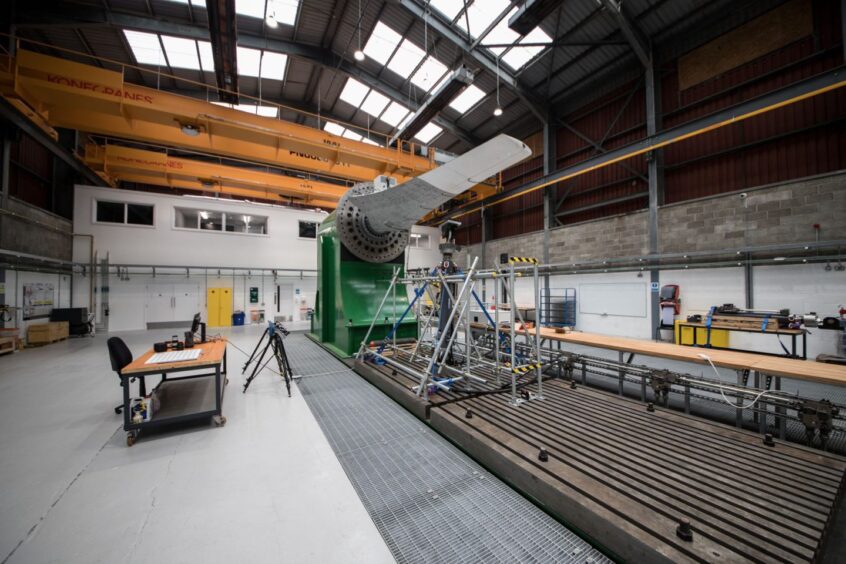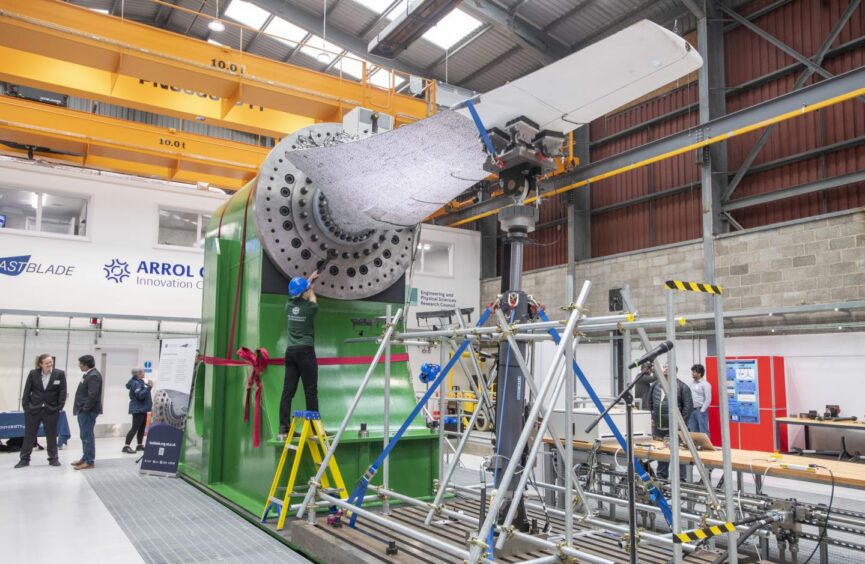
A new ‘state-of-the-art’ tidal turbine blade has been manufactured in Scotland for the first time, and engineers say it could reduce the levelised cost of tidal energy (LOCE).
Engineers from the University of Edinburgh said the new structure reduces the amount of materials necessary for construction.
The new turbine design reduces down the weight, volume and, crucially, the cost of manufacturing the blade.
Four completed turbine blades are now undergoing sea trials in Langstone Harbour on the south coast of England.
The 13 members of the design team are based at the University’s FastBlade facility in Rosyth, Fife, the world’s first rapid testing facility for tidal turbine blades.
Aim to match tidal LCOE with offshore wind
FastBlade leader Dr Eddie McCarthy, from the University of Edinburgh’s School of Engineering, said the project began in October, 2022.
“This project represents a major step change in our group’s capacity to manufacture tidal blades at reasonable size scale (around three metres long) at a reasonable speed,” he said.
“We have found a faster, cheaper route to manufacture than the usual tidal blade fabrication process, based on an altered design – we hope the combination of improved design and optimized manufacturing process will contribute to reducing the levelized cost of energy of tidal stream energy, with the long term goal of matching LCOE of offshore wind.”
The University of Edinburgh said the current UK contract price for tidal stream energy is around £178 per MWh, compared to £65 for offshore wind.
The high generation cost is a barrier to the development of tidal energy, which the University described as “potentially the missing piece of a year-round, renewable energy grid”.
A recent report found tidal stream energy could provide more than 6GW of energy to the UK grid by 2050.
ORE Catapult estimates the cost of generating power from tidal streams has fallen by 40% since 2018.
FastBlade turbine design first of its kind
FastBlade lead design engineer Professor Dilum Fernando said it is the first time this type of structure has been used in blade manufacturing.
“Its monolithic structure eliminates the weaker adhesive joints found in conventional rotor blades, which will make it more resilient to tidal stream conditions,” he said.
The team manufactured the blades alongside Tocardo Turbines for tidal energy technology company QED Naval as part of the European Tidal Stream Industry Energiser Project known as TIGER.
QED Naval managing director Jeremy Smith said the project will help bring down the cost of tidal installations.
“We have deliberately demonstrated the design tools, processes and build method on our smaller T1 blade design, using a 6.3m rotor diameter, but we will be pulling these through into our T3 blades up to 14m rotor diameter,” Mr Smith said.
“This work, and its part in the EU Interreg TIGER Project helps showcase cost savings and the benefits of tidal energy.”
The four completed blades are deployed in QED’s Subhub tidal platform and the University of Edinburgh team said it is looking for funding to carry out detailed testing of a fifth blade at FastBlade.
FastBlade is part of the Arrol Gibb Innovation Campus in Fife, for large-scale advanced engineering and manufacturing and skills development focused on the marine and energy sectors.
 © Supplied by Lesley Martin
© Supplied by Lesley Martin © Supplied by University of Edinbu
© Supplied by University of Edinbu